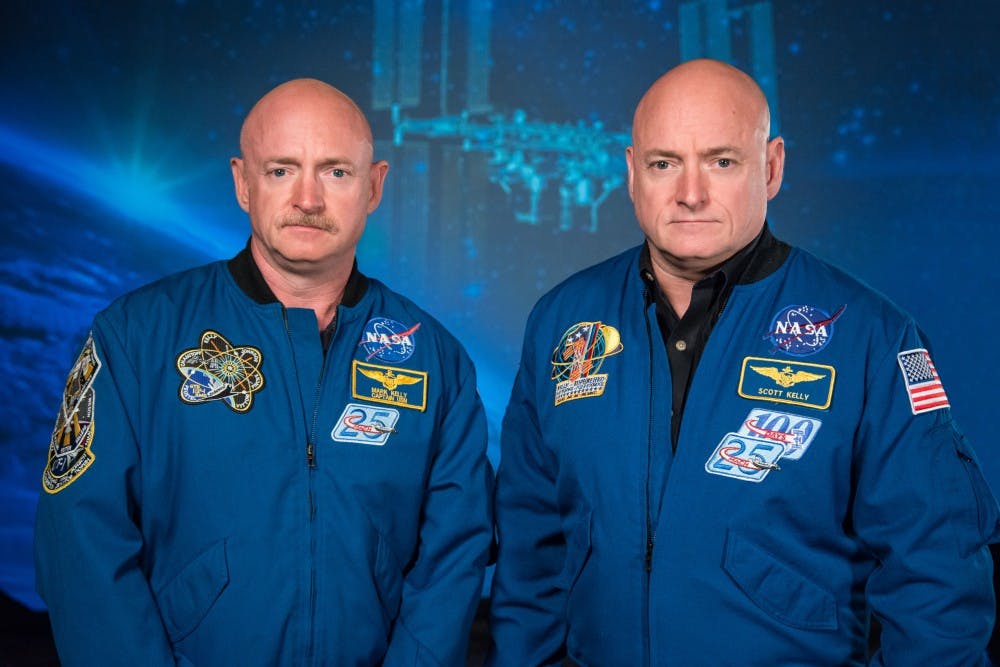Space travel introduces numerous environmental stressors, including microgravity, isolation and radiation. While the National Aeronautics and Space Administration (NASA) consistently studies the effects of space on the human body as part of their Human Research Program.
Identical twins, who have identical genomes, provided a unique chance for NASA to more accurately assess the impacts that space travel have on gene expression.
Identical twin brothers Mark and Scott Kelly were the first to propose the experiment, which was approved by NASA after several universities, including Hopkins, showed interest in collaborating with the Kellys.
The twin study is comprised of 10 different projects that ran between 2015 and 2016. Scott stayed on the International Space Station (ISS), while Mark stayed on earth.
Each individual project focused on a different measure of human health, such as epigenomics, immunity and telomere length.
For the duration of the study, the brothers provided blood, urine and stool samples for each of the project leaders to analyze. Scott had to perform the sample collections himself. The goal was to build a more complete and comprehensive report on the effects of space travel on the human body.
While onboard the ISS, Scott was consistently dehydrated. This is not uncommon among astronauts and is not necessarily a direct result of space travel itself.
In fact, NASA has previously found that astronauts on the ISS may purposely hydrate themselves less because of the complicated onboard lavatory system.
Throughout his trip, Scott’s body was under constant physiological stress. No longer pulled by gravity, the blood in his legs rushed into his head, causing pressure. While it is possible to adapt to microgravity, according to the Scientific American, Scott felt the effects throughout his stay on the ISS.
“Your body adjusts to it over time, but in my experience, it never adjusts completely. I always felt pressure in my head,” he said.
Scott also had changes in gene expression when compared to his brother. His immune system was highly active, his carotid artery was distended and he developed “spaceflight-associated neuro-ocular syndrome” (SANS), a condition that affects the eyes.
There were also notable changes in the length of Scott’s telomeres. While telomeres serve to cap the ends of chromosomes and are shortened by aging, Scott’s telomeres got longer on some chromosomes.
Because of the harsh conditions of microgravity and radiation, it was expected that telomeres would shorten in length. Biologists who work on the study suggest that Scott’s regimented diet and exercise routine may have contributed to the change.
The change in telomere length was not permanent. Once Scott returned to Earth, his telomeres shortened again, returning to about the length they were preflight. Similarly, 93 percent of the changes in Scott’s gene expression returned to normal within six months of being on Earth.
On returning to the full force of Earth’s gravity, the blood that once collected in Scott’s head pooled in his legs for weeks after his return. He also developed rashes on areas of his skin that were exposed to even moderate pressure. Still, Scott’s body did eventually readjust after enough time had passed.
The twin study revealed that spaceflight could have various impacts on the human body. But it also showed how quickly the human body seems to be able to adapt and return to its natural state. The results will help scientists prepare for missions that extend further from the protection of Earth.
The ISS is still partially protected from potentially damaging cosmic rays. If astronauts were to travel further, astronauts would be exposed to even higher levels of radiation.
All of the scientists involved warn that the sample size of the study is incredibly small. Therefore, NASA’s twin study is more a measure of correlation than causation.
However, the results are still a powerful tool for generating new hypotheses and defining the potential boundaries of space travel.





